Categorías
- iridología (226)
- Lectura ocular (24)
- software QR (15)
- Blog (250)
- Ilustración de iridología (35)
- curso en línea de iridología (54)
- iridología (59)
- Exhibición (2)
- Noticias (411)
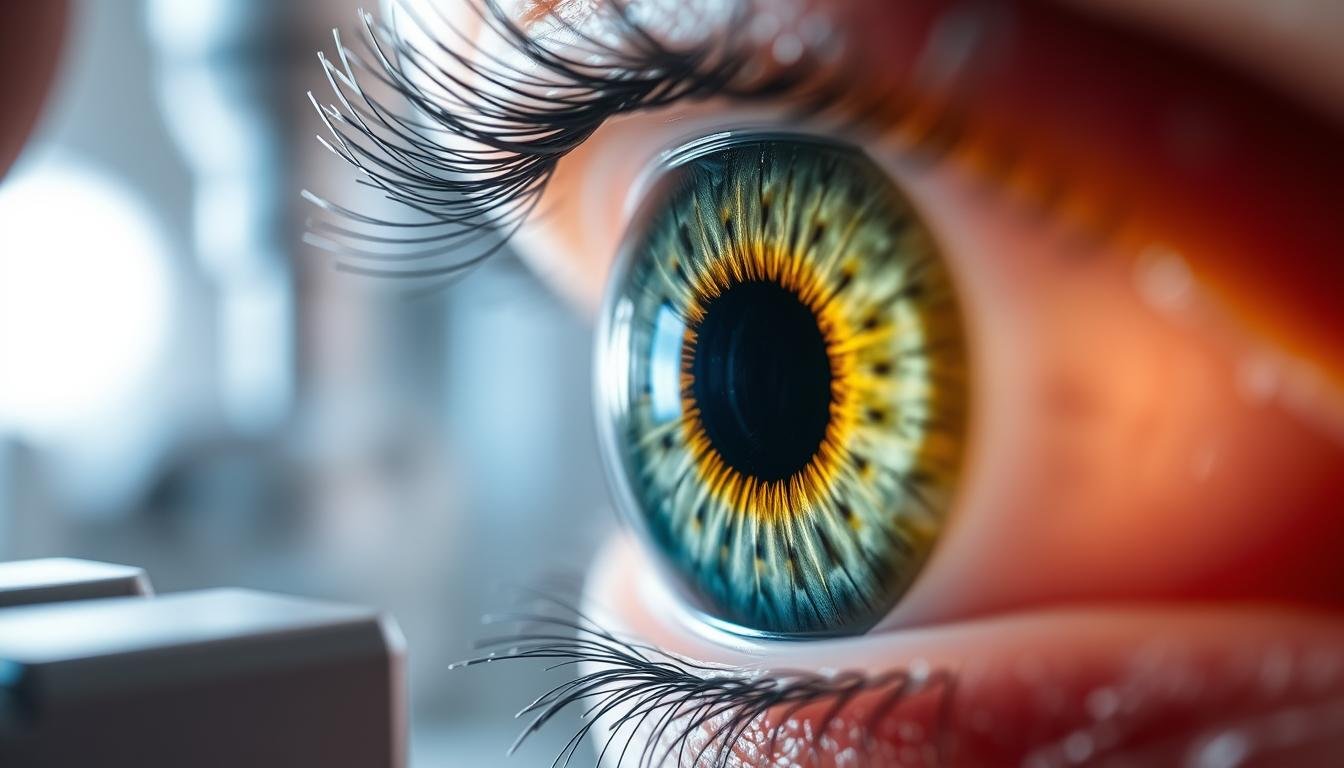 Read on for how iridologists examine the iris, what signs they look for, and which health conditions they commonly say a reading can highlight.
Read on for how iridologists examine the iris, what signs they look for, and which health conditions they commonly say a reading can highlight.At the center of iridology practice is an iris chart — a map practitioners use when examining irises. Most gráficos de iridología divide each iris into numerous zones (many charts reference roughly 80–90 areas), with each zone linked to a particular organ, gland, or body system. When an iridologist examines your eyes, they compare markings and colors against this map to suggest which part of the body may be under stress or showing early changes. These interpretations are used by iridologists and are not a substitute for medical testing (see FAQ).


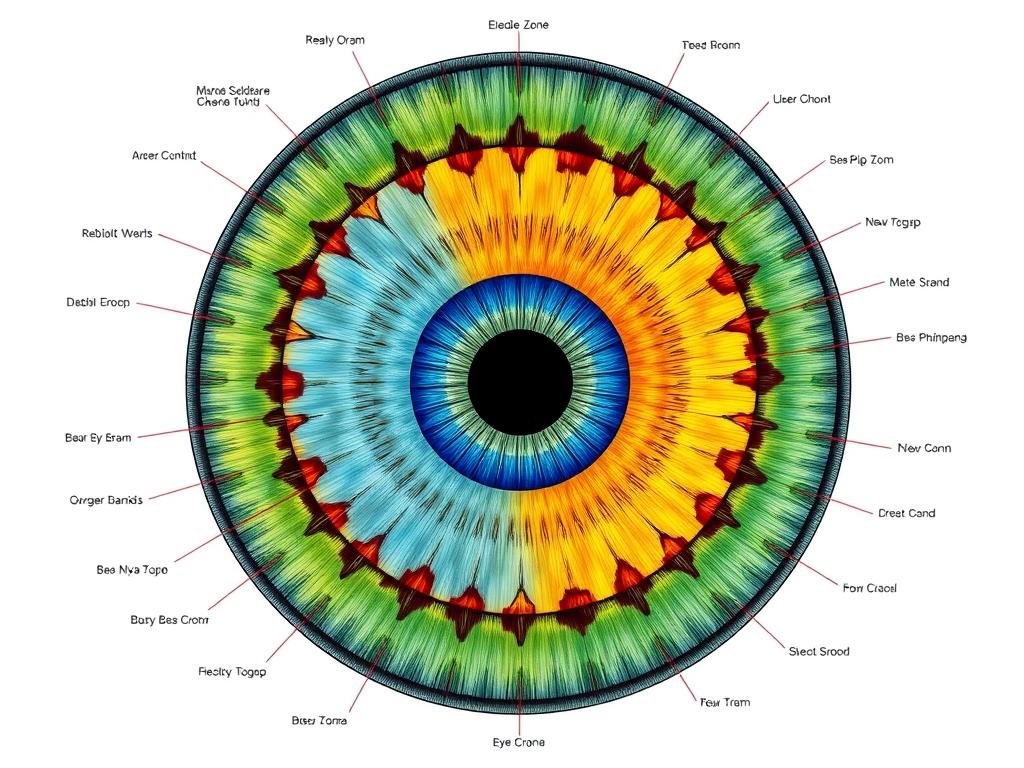
Iridology chart mapping different zones of the iris to corresponding body systems (note: left iris often reflects left-side body organs; right iris often reflects right-side body organs)
To make diagnosis more accurate, tabla de iridología is often use in conjunction with other diagnostic methods.

ojo derecho reflejes lado derecho cuerpo.
| Posición del reloj (ojo derecho) | Corresponde órgano/sistema | Detalles |
|---|---|---|
| 1 en punto - 2 en punto | Cara derecha | Corresponde a los órganos reproductivos izquierdos, incluyen útero, ovarios (hembras) o testículos (hombres). |
| 2 en punto - 3 en punto | Garganta |
Ringflects Health Juntas izquierdas, incluye rodillas, caderas, codos y hombros. |
| 3 en punto - 4 en punto | Espalda superior derecha |
Corresponde a la columna vertebral, la salud espinal, la alineación y la flexibilidad. |
| 4 en punto - 5 en punto | Vejiga | Ringflects Bladder y Sistema urinario del lado derecho. |
| 5 en punto - 6 en punto | Pélvico derecho | Anlingpresents izquierda colon, intestino delgado y salud digestiva. |
| 6 en punto - 7 en punto | Abdomen inferior derecha |
Ringflects izquierdo de riñón, se centra en la filtración, la desintoxicación y el equilibrio de fluidos. |
| 7 en punto - 8 en punto | Abdomen superior derecho |
Ringflects estómago y órganos digestivos en el lado izquierdo. |
| 8 en punto - 9 en punto | Tórax derecho | Corresponde al hígado del lado izquierdo, la desintoxicación responsable y la producción de bilis. |
| 9 en punto - 10 en punto | Pulmón derecho | Los ritmo del corazón del lado izquierdo, afectan la salud y la circulación cardiovascular. |
| 10 en punto - 11 en punto | Cuello derecho | Ringflects Left Lunm, salud respiratoria y función Brea. |
| 11 en punto - 12 en punto | Cerebro derecho |
Corresponde al cerebro del hemisferio izquierdo, la salud mental y las funciones cognitivas. |
| 12 en punto - 1 en punto | Cerebro derecho |
Corresponde al cerebro del hemisferio izquierdo, la salud mental y las funciones cognitivas. |

ojo izquierdo reflejes lado izquierdo cuerpo.
| Posición del reloj (ojo izquierdo) | Corresponde órgano/sistema | Detalles |
|---|---|---|
| 1 en punto - 2 en punto | Cuello izquierdo |
Corresponde a los órganos reproductivos derecho, incluyen útero, ovarios (hembras) o testículos (macho). |
| 2 en punto - 3 en punto | Pulmón izquierdo | Ringflects Health Right Junks, incluyen rodillas, caderas, codos y hombros. |
| 3 en punto - 4 en punto | Tórax izquierdo | Corresponde a la columna vertebral, la salud espinal, la alineación y la flexibilidad en el lado derecho. |
| 4 en punto - 5 en punto | Abdomen de la parte superior izquierda |
Ringflects Bladder y Sistema urinario del lado izquierdo. |
| 5 en punto - 6 en punto | Abdomen inferior izquierdo |
Anillo de anillo de colon derecho, intestino delgado y salud digestiva. |
| 6 en punto - 7 en punto | Pélvico izquierdo |
Ringflects riñón derecho, se centra en la filtración, la desintoxicación y el equilibrio de fluidos. |
| 7 en punto - 8 en punto | Izquierda hacia atrás |
Ringflects estómago y órganos digestivos en el lado derecho. |
| 8 en punto - 9 en punto | Izquierda de la parte superior de la espalda |
Corresponde al hígado del lado derecho, la desintoxicación responsable y la producción de bilis. |
| 9 en punto - 10 en punto | Garganta izquierda |
Antes de anillo del corazón del lado derecho, afectan la salud y la circulación cardiovascular. |
| 10 en punto - 11 en punto | Cara izquierda | Ringflects pulmón derecho, salud respiratoria y función Brea. |
| 11 en punto - 12 en punto | Cerebro izquierdo | Corresponde al cerebro del hemisferio derecho, la salud mental y las funciones cognitivas. |
| 12 en punto - 1 en punto | Cerebro izquierdo | Corresponde al cerebro del hemisferio derecho, la salud mental y las funciones cognitivas. |
Color and marking interpretation are core tools in an iridologist’s approach. Common practitioner conventions include:
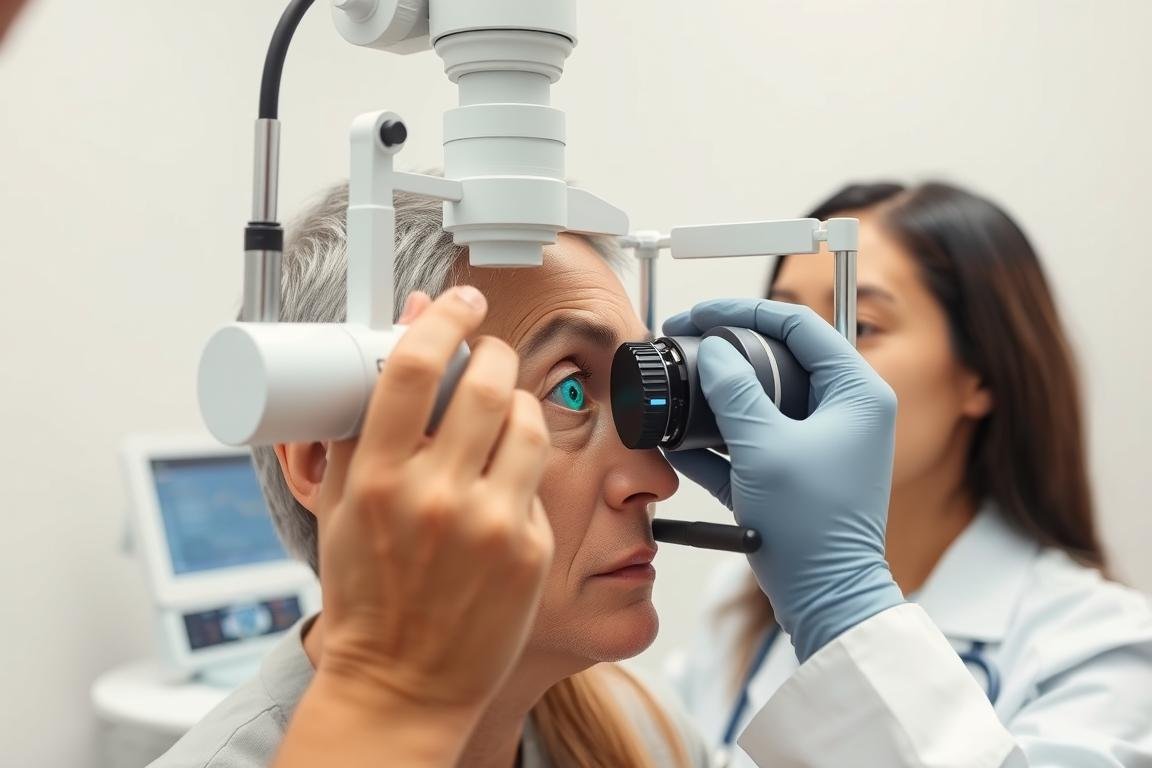
Fiber pattern analysis is another important element. The collagen fibers that make up iris structure can appear tight or loose; practitioners read tight, well-defined fibers as an indicator of stronger constitutional resilience, while looser, more chaotic fibers may be taken to suggest areas of genetic or constitutional weakness that might need support. For example, a practitioner might note a looser fiber structure in the pupil ring (examining iris pupil area) and recommend a digestive evaluation or dietary changes as a next step (practitioner interpretation).
Iridologists use simple tools — a magnifying lens or a specialized digital camera — to photograph and study both irises. As with many alternative approaches, interpretations vary by practitioner and should be considered as information that may guide further testing or conversations with your health care providers.
Read the next section on 5 key benefits to learn what iridology practitioners commonly say a reading can reveal about your health and stress patterns.
— Historical note: modern iridology methods are often traced back to Ignatz von Peczely, who helped popularize the idea in the 19th century.
One commonly cited Iridology Reading Benefit is the ability to flag inherited tendencies before symptoms appear. Iridologists look for characteristic iris signs that they interpret as constitutional markers — patterns that may suggest a person’s predisposition to certain conditions so that preventive steps can be taken.
What the iris shows: stable structural markers or fiber formations that practitioners read as inherited patterns.
What an iridologist might recommend: targeted lifestyle or dietary changes, closer monitoring, or conventional screening tests if a hereditary concern is suspected.
Evidence level: practitioner-based interpretation; limited clinical validation. Always confirm with your health care provider.
“The iris reveals inherited patterns that can indicate which body systems may need additional support,” explains Maria Collins, a certified iridologist with 15 years of experience. “This gives patients the opportunity to address potential health issues proactively rather than reactively.”
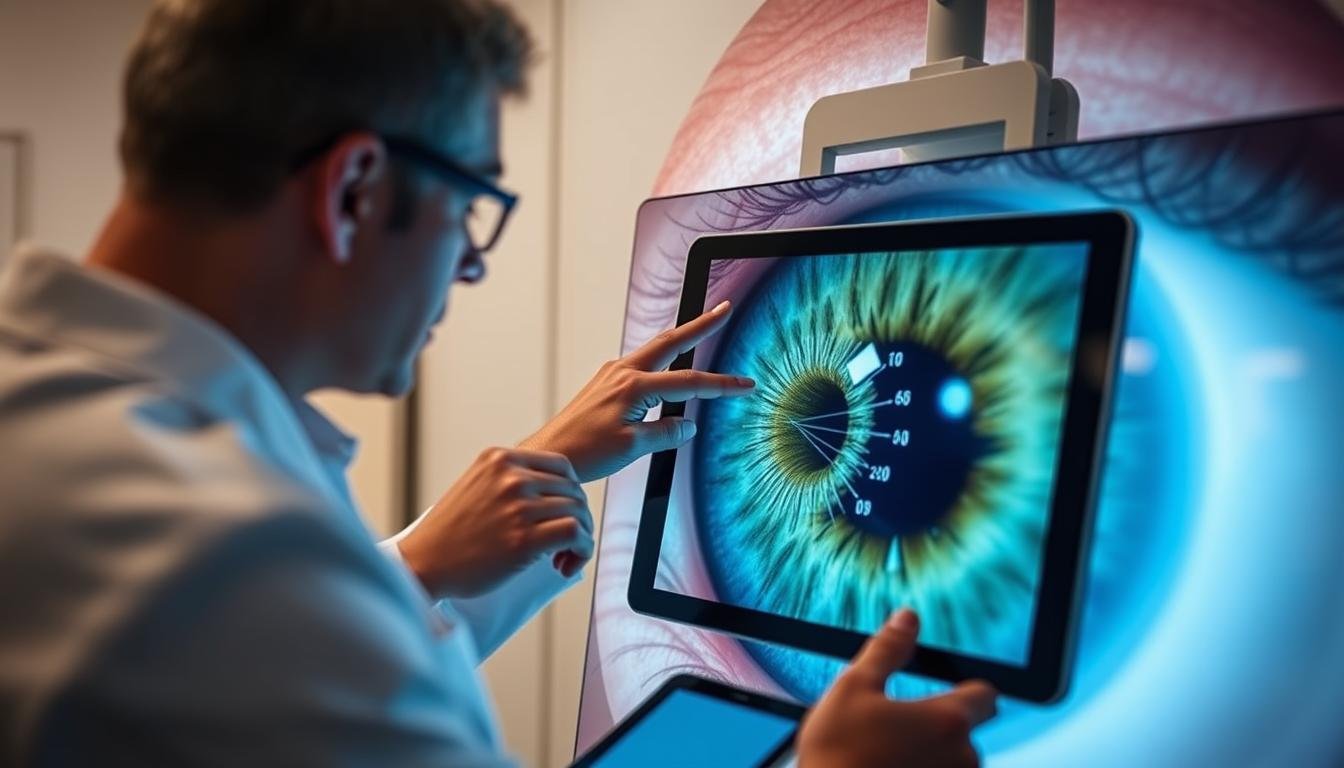
Iridology practitioners often use iris color changes and clouding to suggest localized inflammation in the body. While not diagnostic, these signs can prompt further investigation.
What the iris shows: white marks or clouding (often read as acute inflammation) and darker marks (often read as chronic congestion).
What an iridologist might recommend: follow-up blood tests (e.g., inflammatory markers), targeted dietary changes, or referral to a medical specialist if warranted.
Evidence level: mixed. Some studies (e.g., research reported in complementary medicine journals) have found correlations between certain iris signs and inflammatory markers, but findings are preliminary and require larger, rigorous trials.
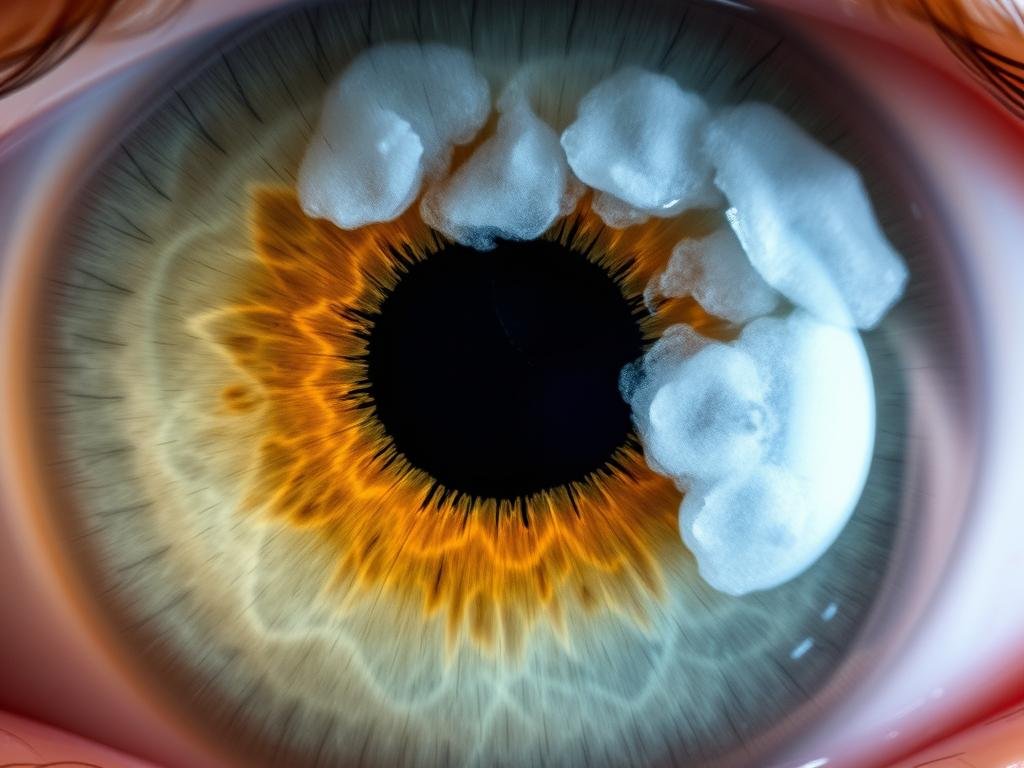
The outer edge of the iris is commonly associated with lymphatic function in iridology charts. Signs in this area may lead practitioners to consider lymphatic congestion as a contributing factor to a person’s low energy or swelling complaints.
What the iris shows: white rings or markings near the outer iris edge that practitioners interpret as lymphatic sluggishness.
What an iridologist might recommend: dietary and lifestyle changes to support lymphatic drainage (hydration, movement, specific foods) and, when appropriate, referral to a medical or allied health professional.
Evidence level: anecdotal and practitioner-observed benefits; limited peer-reviewed research.
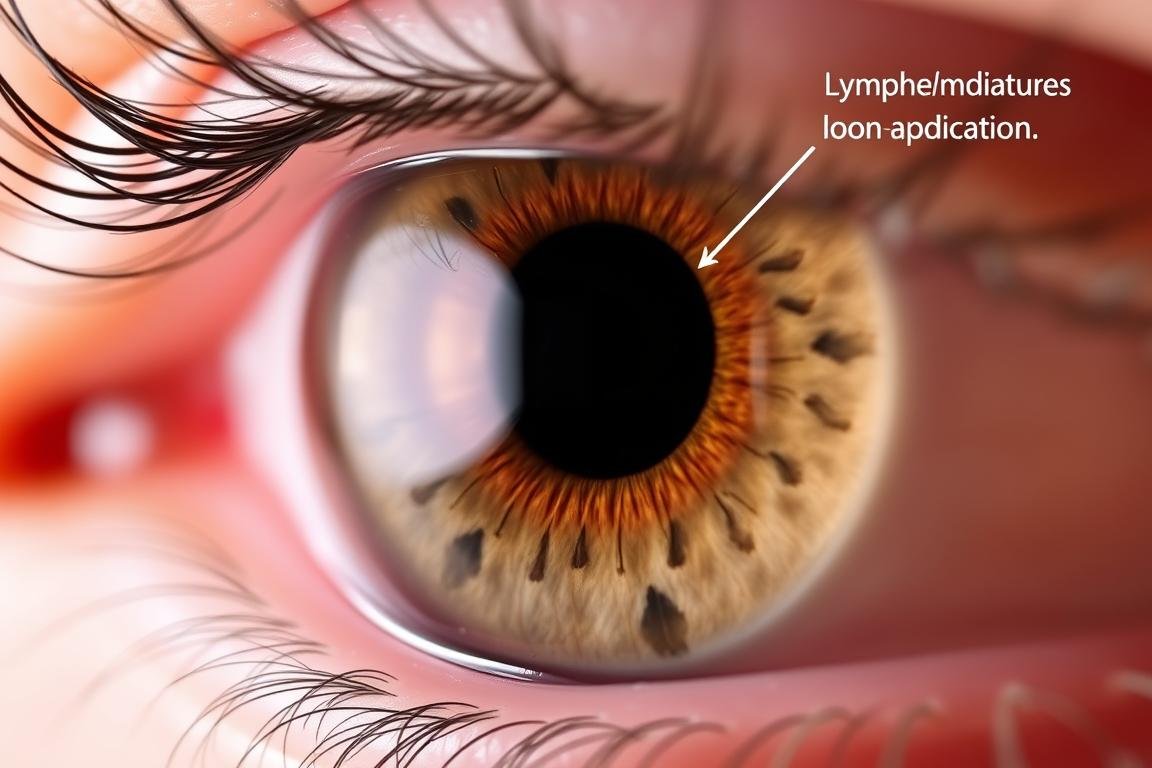
Schedule a consultation with a certified iridologist to learn about your body’s strengths and potential areas needing support.
Iridologists often read nerve rings and contraction patterns as indicators of how stress affects the nervous system. These signs can highlight chronic tension or autonomic imbalance that may impact overall wellness.
What the iris shows: concentric nerve rings or contraction furrows commonly associated with stress response.
What an iridologist might recommend: stress-reduction strategies (breathwork, sleep hygiene, targeted lifestyle interventions) and, where appropriate, evaluation by health care professionals for suspected nervous system issues.
Evidence level: limited; some neuroscience-related studies have explored links between iris patterns and autonomic function, but more research is needed.
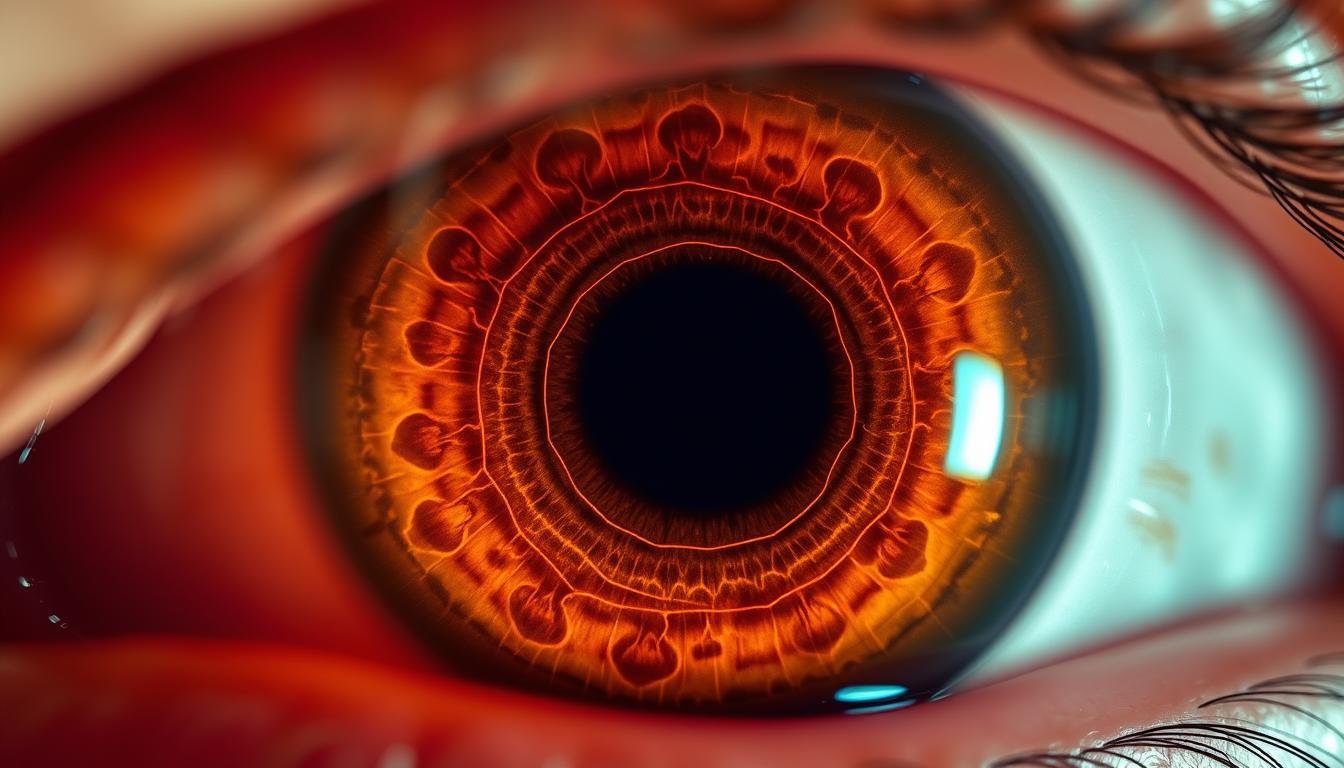
The inner ring around the pupil is commonly read as the digestive zone in iridology charts. Changes in this area may prompt practitioners to consider digestive inefficiencies, food sensitivities, or nutrient-absorption issues.
What the iris shows: irregularities or discoloration near the pupil ring often interpreted as digestive-zone signs.
What an iridologist might recommend: targeted dietary adjustments, elimination trials for suspected sensitivities, or conventional digestive testing if symptoms are significant.
Evidence level: practitioner-observed patterns; should be corroborated with conventional testing for clinical decisions.
“The digestive zone of the iris often reveals issues before traditional symptoms appear,” says Jennifer Marks, holistic nutritionist and iridology practitioner. “This allows us to make targeted dietary recommendations that can prevent more serious digestive problems from developing.”
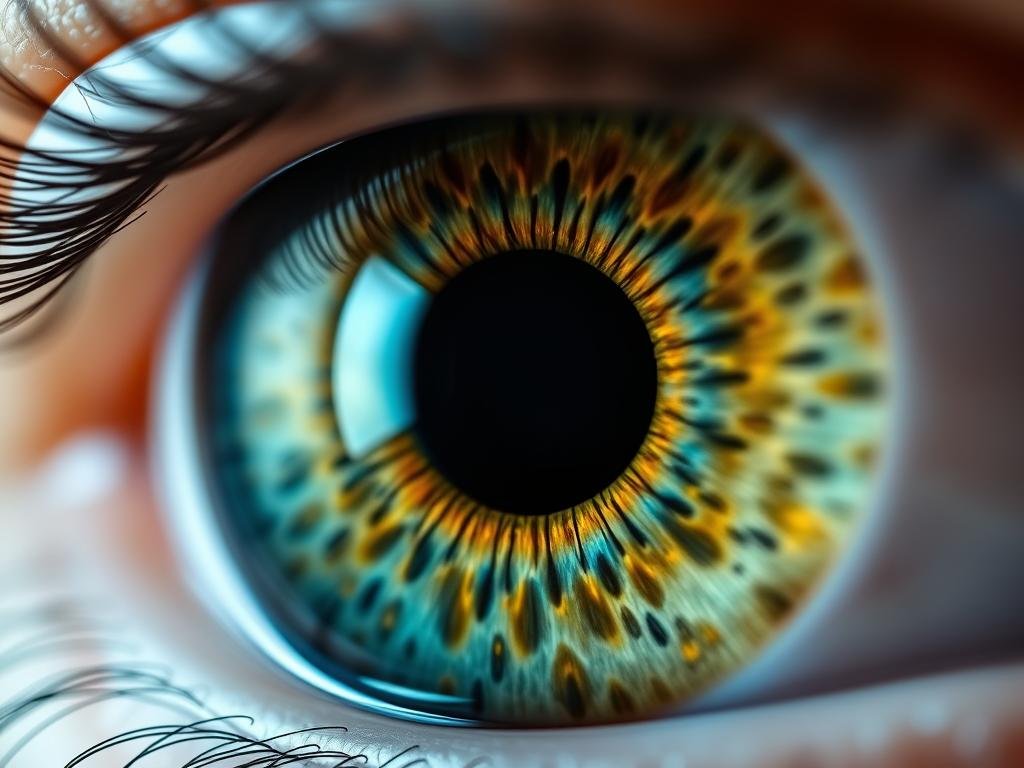
While iridology should never replace conventional medical testing or diagnosis, practitioners use iris observations to provide insights into possible health conditions and imbalances. Below are some of the health conditions and health issues that iridologists commonly say a reading can help flag — along with practical next steps you can take if a concern appears.
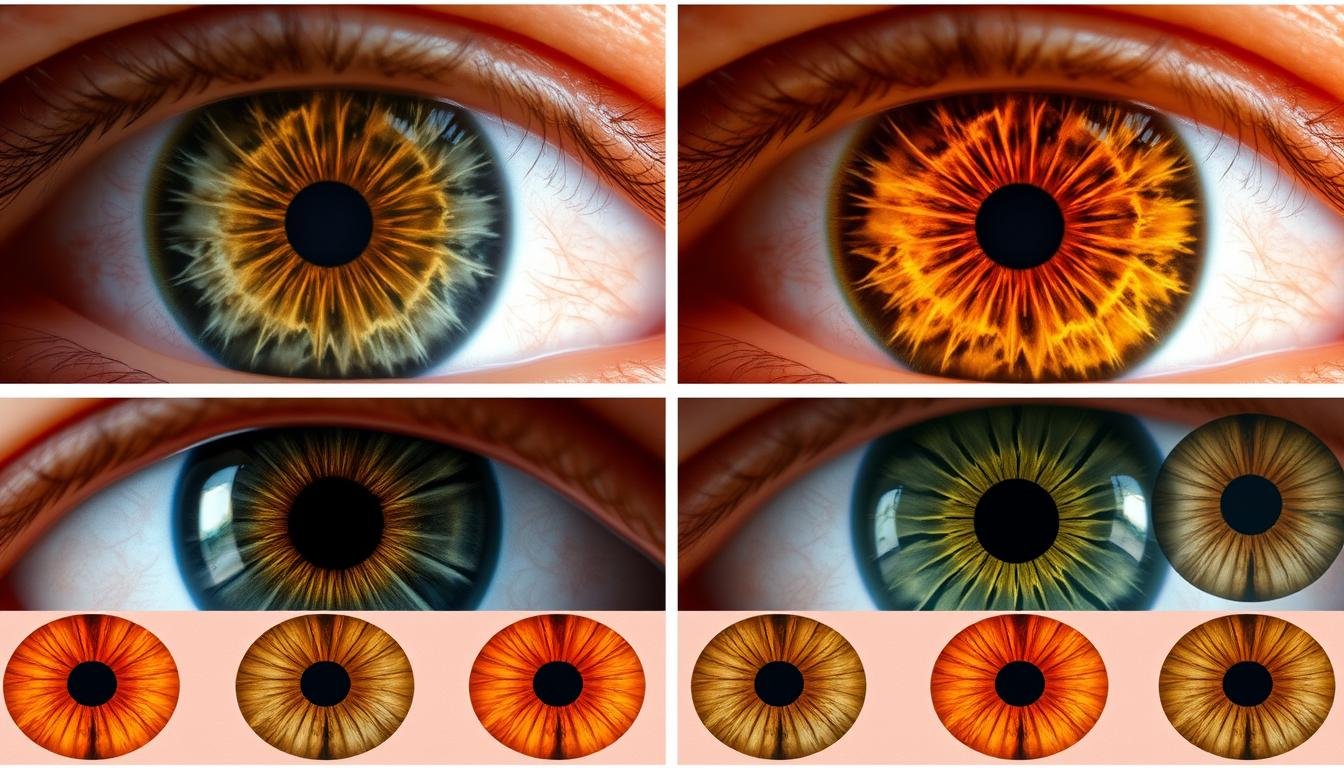
Different iris patterns may indicate various health conditions according to iridology practice
What to do if an iridology reading flags a concern:
Case example (anonymized): A middle-aged person had an iris reading that suggested liver-zone discoloration. Follow-up liver function tests and imaging were ordered by their physician; mild nonalcoholic fatty liver changes were confirmed, leading to dietary and exercise interventions. This example illustrates how an iridology insight can prompt conventional evaluation (anecdotal and not a substitute for medical diagnosis).
Dr. Lisa Thompson, naturopathic physician, notes: “While we don’t use iridology to diagnose specific diseases, it often guides us toward areas that need further investigation through conventional testing. Many patients find that the iris assessment aligns with symptoms they’ve been experiencing but hadn’t connected.”
This table summarizes key differences between an iridology reading and a traditional eye exam. It is intended as a quick reference; see the Scientific Perspectives and FAQ sections for details on evidence, limitations, and when to consult care professionals for medical diagnosis.
| Aspecto | Lectura de iridología | Traditional Eye Exam |
| Primary Purpose | Assess overall body health and wellness through iris signs | Evaluate eye health, visual acuity, and ocular disease |
| What It Examines | Iris patterns, colors, and markings interpreted as indicators of systemic conditions | Eye structures, intraocular pressure, retina, and vision function |
| Facultativo | Iridologist, naturopath, or holistic practitioner (complementary practice) | Ophthalmologist or optometrist (medical specialists) |
| Validación científica | Limited scientific validation; generally considered complementary/alternative by mainstream medicine | Extensive validation and standardized protocols in clinical practice |
| Equipment Used | Magnifying lens or specialized digital iris camera (tool for documenting signs) | Slit lamp, tonometer, phoropter, OCT and other ophthalmic devices |
| Health Insurance Coverage | Por lo general, no está cubierto por un seguro de salud | Often covered or partially covered by health insurance or vision plans |
Download our comprehensive iridology chart guide — includes a sample chart, glossary of iris signs, and tips on how to choose a qualified practitioner and discuss findings with your health care team.
Iridology has limited scientific validation in conventional medicine. Some studies have reported correlations between specific iris signs and certain health conditions, but evidence is preliminary and not definitive. View iridology as a complementary tool that can provide information for further investigation rather than a standalone diagnostic method. If you have health concerns, consult care professionals for appropriate tests and diagnosis.
A typical iridology session lasts between 30–60 minutes. During that time the practitioner will examine both irises, often photographing them with a specialized camera or using a magnifying lens, then review observations and possible next steps. Follow-up sessions are usually shorter and focus on tracking changes over time. If you have ongoing health issues, a practitioner may recommend more frequent check-ins.
No — iridology should not be used to diagnose specific diseases such as cancer. While practitioners may note signs of tissue stress or inflammation in areas of the iris that correspond to certain organs, these observations are not diagnostic. Always seek medical evaluation from your health care provider for serious health issues and follow recommended screening protocols.
Most practitioners recommend an initial reading followed by follow-ups every 6–12 months for wellness monitoring. For people addressing specific health issues, readings may be scheduled more frequently (for example every 3–6 months) to track changes and responses to interventions. Use iris photos and notes to compare changes over time and discuss results with your primary care provider when tests or referrals are suggested.
If an iridologist flags a potential concern: 1) validate — ask for a clear explanation and documented iris photos, 2) consult — bring the findings to your primary care provider or a relevant specialist for appropriate tests, and 3) track — keep dated photos and symptom notes to detect early changes and measure progress. Treat iridology as a prompt for further evaluation, not a clinical diagnosis.

“While conventional medicine remains skeptical of iridology, some research suggests potential correlations between iris characteristics and certain physiological conditions. The field would benefit from more rigorous scientific investigation.”
Recent research has explored possible links between iris signs and aspects of systemic health, but study designs and sample sizes vary and findings remain preliminary. Correlation does not equal causation — existing work highlights interesting patterns in iris structure and color, yet does not establish iridology as a diagnostic method.
Representative studies and reviews include:
How to read these findings: look for study type (pilot vs. controlled), sample size, and whether analyses were blinded — larger, replicated, and methodologically robust studies are needed before iridology can be considered a validated diagnostic approach.
Note: While research into iris signs is ongoing, these studies do not validate iridology for medical diagnosis. Consult qualified healthcare professionals for any medical concerns or diagnostic testing.
Iridology offers a perspective on overall health by examining the iris and irises for patterns that practitioners interpret as clues to imbalances, genetic predispositions, or areas of the body experiencing stress or inflammation. As a complementary, non-invasive practice, it can contribute useful information for people pursuing holistic health and wellness when used alongside conventional health care.
That said, iridology is not a replacement for medical diagnosis. Use iris findings as guidance for further evaluation rather than as definitive answers. For the best outcomes, combine insights from certified iridologists with testing and advice from medical care professionals who can provide evidence-based diagnosis and treatment.
Next steps you can take:
Discover what your eyes may reveal about your health with a professional iridology reading. When choosing a practitioner, look for verified credentials and ask about their approach and experience.

SOFTWARE DE IRIDOLOGÍA MAIKONG Instalación y funcionamiento
